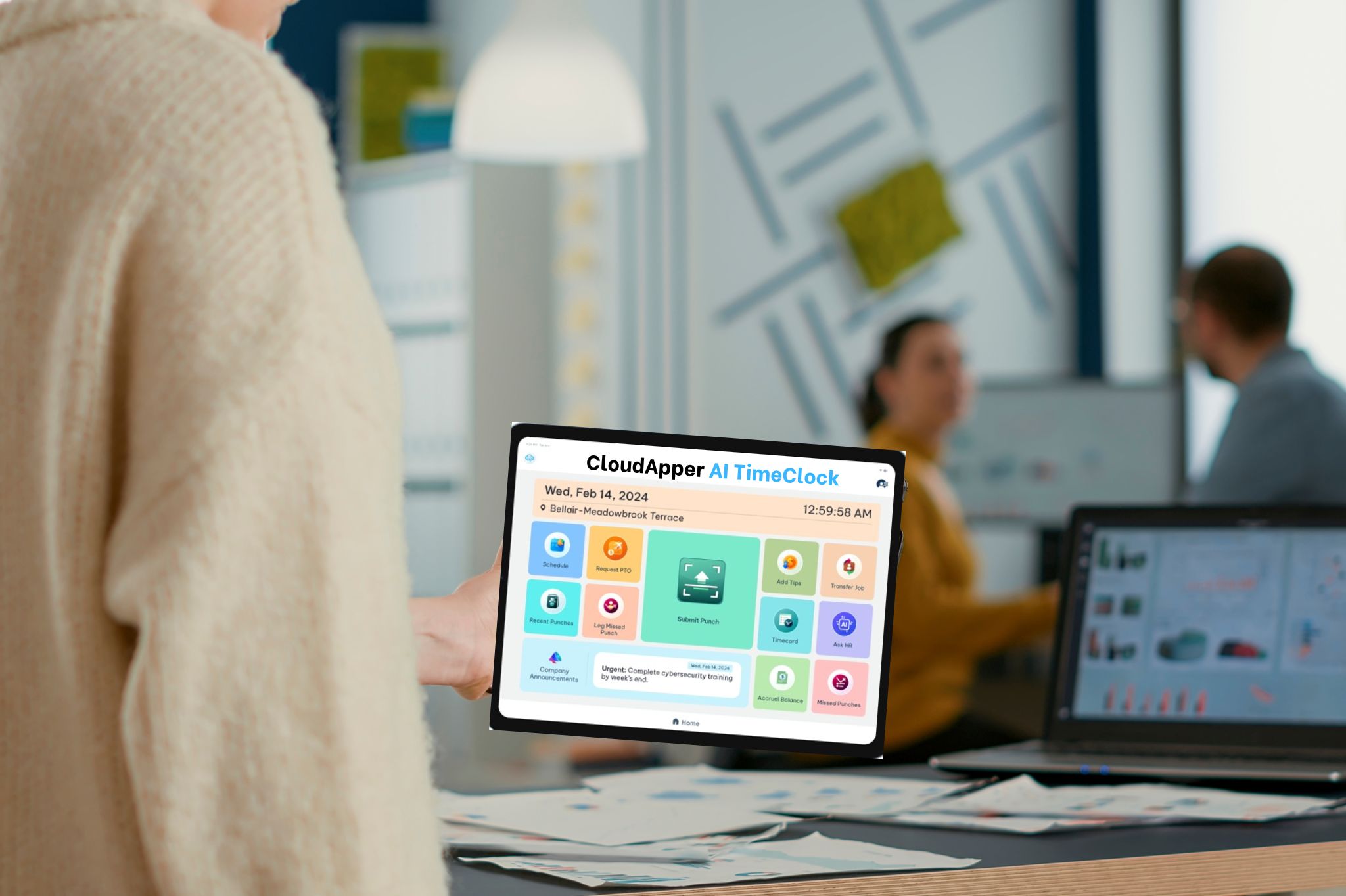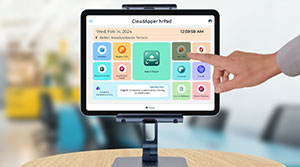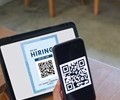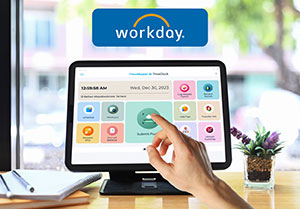Table of Contents
Integrating multiple human capital management (HCM) systems is crucial for modern businesses to run efficiently. For example, while processing payroll, many companies use Workday, but for time tracking and leave management, they utilize Oracle Cloud HCM. Data flow, accuracy, and operational efficiency are all improved by integrating these systems. By utilizing custom logics and rulesets to address unique organizational requirements, CloudApper’s AI-powered time clock for Workday and Oracle Cloud HCM provides a strong answer to this integration problem.
For more information on CloudApper AI TimeClock visit our page here.
The Need for Integration
- Enhanced Data Accuracy and Consistency: Data integrity and consistency across all channels are guaranteed by connecting Workday HCM with Oracle Cloud HCM. Because of this connectivity, all departments will always have access to the most current information, and there will be fewer mistakes caused by manual data entry.
- Streamlined Processes: Organizations can save time and effort on administrative tasks, simplify operations, and boost productivity by automating workflows and integrating Workday with Oracle Cloud HCM. This guarantees that payroll, absence management, and time tracking go seamlessly.
- Improved Compliance: Staying compliance with labor laws and regulations is made easier for firms with accurate and timely data synchronization. By automatically recording and reporting employee hours, payroll, and leave, automated systems lessen the likelihood of noncompliance.
How CloudApper’s AI TimeClock Facilitates Integration
With CloudApper’s AI-driven time clock solution for Oracle HCM and Workday, you can connect Workday with Oracle Cloud HCM without a hitch. CloudApper makes it easier to do this by doing the following:
- Efficient Time Data Collection: To guarantee precise time data gathering, CloudApper AI TimeClock employs cutting-edge technologies like geofencing and biometric verification. Workers may punch in and out using built-in apps for both iOS and Android, collecting accurate time that is immediately saved and synced.
- Data Transformation Using Custom Logics and Rulesets: After data collection is complete, CloudApper AI TimeClock can be customized using your own logics and rulesets to transform the information, making it compatible with Oracle Cloud HCM and Workday or generate a custom payroll or time card report. By tailoring it to the exact specifications, we guarantee that the data will integrate without a hitch.
- Real-time Synchronization: Integrating with Workday and Oracle Cloud HCM, CloudApper AI TimeClock allows for the real-time synchronization of altered data. As a result, there will be no lag time or inconsistencies when it comes to updating employee time data across all platforms.
Use Cases for Integration
- Time Tracking and Payroll Processing: For payroll processing, businesses may utilize Workday, and for time tracking, they may use Oracle Cloud HCM. In order to ensure precise payroll processing, CloudApper AI TimeClock gathers time data for Oracle Cloud HCM, processes it using custom rule sets, and then synchronizes it with Workday for payroll processing.
- Leave Management and Compliance: Businesses that use Oracle Cloud HCM to handle employee leaves can rest certain that CloudApper AI TimeClock will collect and translate their leave data accurately, allowing them to satisfy all regulatory requirements. In order to maintain reliable records, this data is subsequently synchronized with Workday for payroll processing or time management.
Steps to Integrate Workday with Oracle Cloud HCM Using CloudApper AI TimeClock
Step 1: Assess Your Integration Needs
First things first: figure out exactly what integration and process automation you need. Find out what information, like time and attendance, leave policies, and payroll details, need to be synced between Workday and Oracle Cloud HCM.
Step 2: Deploy CloudApper AI TimeClock
Your staff can start using the CloudApper AI TimeClock the moment it’s installed on their iOS and Android smartphones. For real-time data synchronization to work, make sure these devices are internet-connected.
Step 3: Configure Custom Logics and Rulesets
Assist the CloudApper team in setting up data transformation logics and rule sets according to your specifications. To make sure Workday and Oracle Cloud HCM are compatible, this stage is to map data fields and set up rules.
Step 4: Develop Mobile Applications
Use CloudApper’s AI to build custom apps for iOS and Android that meet your company’s specific requirements. By integrating with Workday and Oracle Cloud HCM, these apps will make it easier to obtain correct data from employees.
Step 5: Monitor and Optimize
Make sure everything is running smoothly by constantly checking in on the integration process. To find problems and enhance the integration for better performance, use CloudApper AI’s reporting and analytics features.
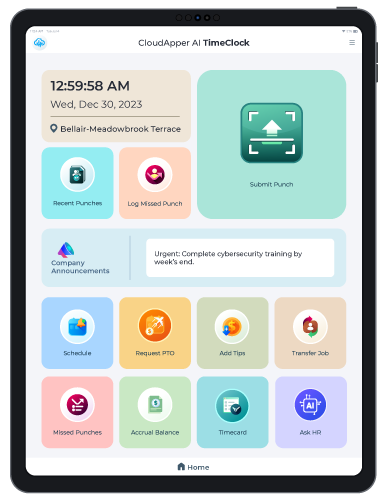
CloudApper AI Time Clock
R.D. Offutt Farms use CloudApper AI TimeClock's Barcode/QR Code Solution for Employee Time Capture
Case Study: Successful Integration in a Retail Company
The retail company used CloudApper AI TimeClock to seamlessly combine Workday and Oracle Cloud HCM, two systems that were previously used independently for payroll processing and time tracking, respectively. Problems with inconsistent data and mistakes made by humans when entering data plagued the business. The following outcomes were attained by the implementation of CloudApper AI TimeClock:
- 50% Reduction in Administrative Overhead: The amount of time spent on manual data entry and reconciliation was greatly diminished because of automated workflow automation and automated data synchronization.
- 30% Improvement in Data Accuracy: The precise transformation and synchronization of data acquired from several sources with Workday and Oracle Cloud HCM were guaranteed by custom logics and rule sets.
- Enhanced Employee Experience: Workers were happier as a whole since native mobile apps made it easy for them to punch in and out, request time off, and view their payroll information.
Frequently Asked Questions (FAQ)
Q1: How does CloudApper AI TimeClock ensure data accuracy during integration? CloudApper AI TimeClock ensures precise time tracking by utilizing biometric authentication and geofencing. For optimal interoperability with Workday and Oracle Cloud HCM, as well as error-free synchronization, this data is further converted using specific logics and rulesets.
Q2: Can CloudApper AI TimeClock handle complex workflows and data transformation?
In fact, CloudApper AI TimeClock can manage intricate processes and change data with ease. In order to tailor the platform to your organization’s unique requirements, it is possible to configure detailed logics and rule sets.
Q3: How secure is the data captured by CloudApper AI TimeClock?
Protecting user information is CloudApper AI TimeClock’s first concern. Data collected, transformed, and synchronized from employees is protected by the system’s state-of-the-art encryption and security measures.
Q4: What support is available during the integration process?
To make sure the integration goes smoothly, CloudApper offers full support throughout, including help with configuration, training, and continuing technical support.
Q5: Can CloudApper AI TimeClock be customized to meet specific business needs? Yes, You can personalize CloudApper AI TimeClock to your liking. If your company has unique requirements for integration and process automation, the CloudApper team may work with you to customize the system.
Conclusion
Using CloudApper AI, we integrated Oracle Cloud HCM with our time tracking and leave management systems. TimeClock provides an accurate, efficient, and streamlined way to manage worker operations. Businesses may increase data accuracy, optimize procedures, and raise overall productivity by adopting CloudApper AI. Automating workflows and integrating AI-driven systems can revolutionize your business.
For more information on how CloudApper AI TimeClock can benefit your organization, visit CloudApper AI TimeClock.
What is CloudApper AI Platform?
CloudApper AI is an advanced platform that enables organizations to integrate AI into their existing enterprise systems effortlessly, without the need for technical expertise, costly development, or upgrading the underlying infrastructure. By transforming legacy systems into AI-capable solutions, CloudApper allows companies to harness the power of Generative AI quickly and efficiently. This approach has been successfully implemented with leading systems like UKG, Workday, Oracle, Paradox, Amazon AWS Bedrock and can be applied across various industries, helping businesses enhance productivity, automate processes, and gain deeper insights without the usual complexities. With CloudApper AI, you can start experiencing the transformative benefits of AI today. Learn More













